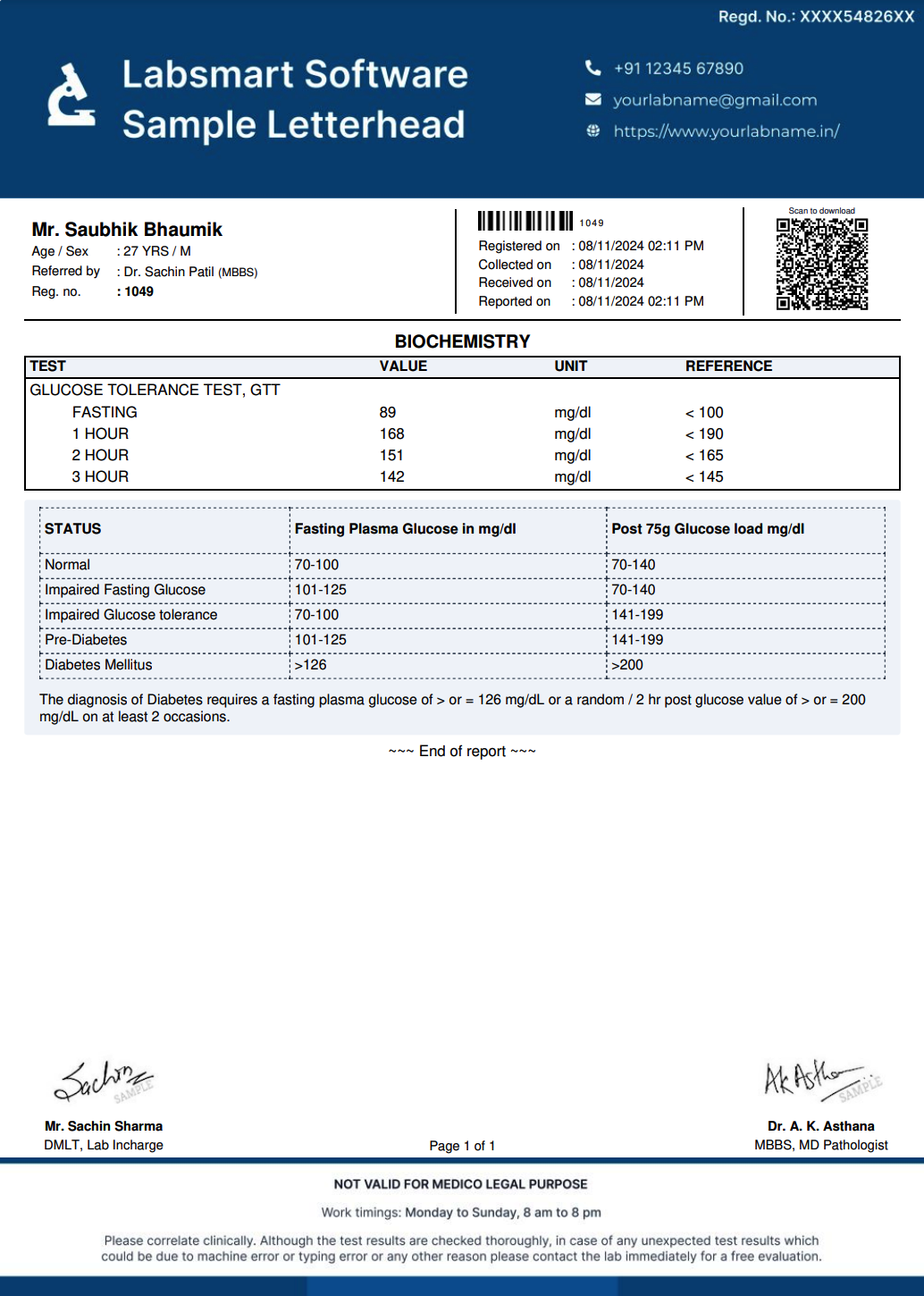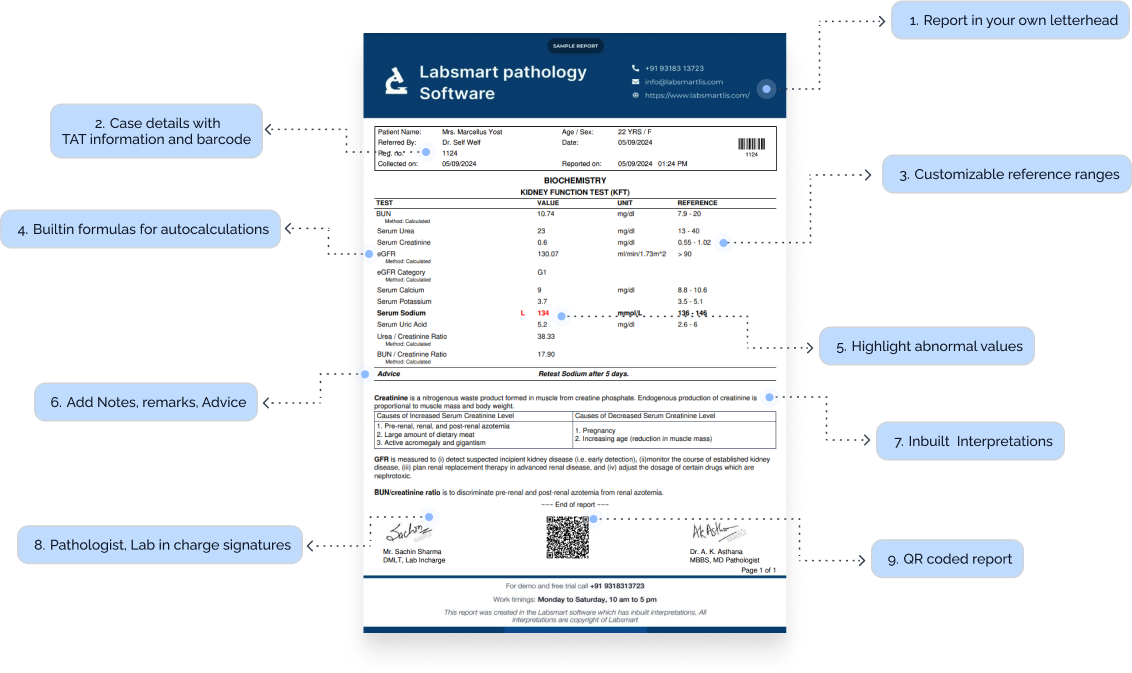What is Glucose Tolerance Test ?
The Glucose Tolerance Test (GTT) measures how well your body processes glucose (sugar). It is commonly used to diagnose diabetes or prediabetes and assess how effectively the body regulates blood sugar levels. During the test, a patient is asked to fast overnight and then drink a sugary solution. Blood samples are taken at various intervals afterward to measure how the body handles the glucose. Clinicians may order a Glucose Tolerance Test to: Diagnose diabetes: Elevated blood sugar levels after drinking the glucose solution can indicate impaired glucose metabolism, which may point to diabetes. Identify prediabetes: In some cases, abnormal results can signal prediabetes, a condition where blood sugar levels are higher than normal but not yet high enough to be diagnosed as diabetes. Evaluate insulin resistance: The test is also used to assess how effectively the body responds to insulin, which is important in managing conditions like metabolic syndrome and gestational diabetes.
Glucose Tolerance Test Report Format: Breakdown
Here’s what an ideal Glucose Tolerance Test report format should include:
Header Information:
- Patient Details: Full name, Age, Gender, and ID.
- TAT information: Timestamp for both sample collection and report generation.
- Doctor's Information: Name of the referral doctor, if applicable.
Test Results Section:
-
Patient's results
As obvious as it is, a test report should definitely have the patient's test result.
-
Result's Unit
The unit of the test result must be mentioned correctly in the report. Glucose Tolerance Test test is generally reported in “mg/dl”
-
Glucose Tolerance Test Normal Value / Reference Range
The report must have the normal Glucose Tolerance Test range. It can differ slightly based on the reagents used by the lab and other internal factors, but common Glucose Tolerance Test ranges are:
Fasting: < 100 mg/dl 1 Hour: < 190 mg/dl 2 Hour: < 165 mg/dl 3 Hour: < 145 mg/dl
Interpretations
Nowadays, most labs prefer to add interpretations to the reports, making the report more patient-friendly. Labsmart software has interpretations of all routine test pre-filled in the software.
Footer Section:
-
Certifications:
Display any relevant accreditations (e.g., NABL, ISO), adding to your lab's credibility.
-
Pathologist and technician signature:
It's mandatory to add a Pathologist and technician signature to the report.
GTT Interpretation
In Labsmart software, this is the inbuilt interpretation for Glucose Tolerance Test
Importance of adding interpretation to reports:
It's very helpful to add interpretation in reports as it makes the reports more patient friendly and also helpful to doctors in some cases. Moreover, presently most labs prefer providing reports with interpretation. Thus, adding interpretation to report will help your lab stay at par with other competitor labs.
Labsmart software
(With Interpretation and auto calculations)
- Billing
- Reports with Interpretation
- Auto calculation where needed
- Check daily business
- WhatsApp reports
* Free plan available

1.5 Crore+
Reports printed & delivered online
1250+
Labs Active
10+
Countries
GTT MS Word format
Download the Ms word editable Glucose Tolerance Test report format for offline reporting.
Download word format





